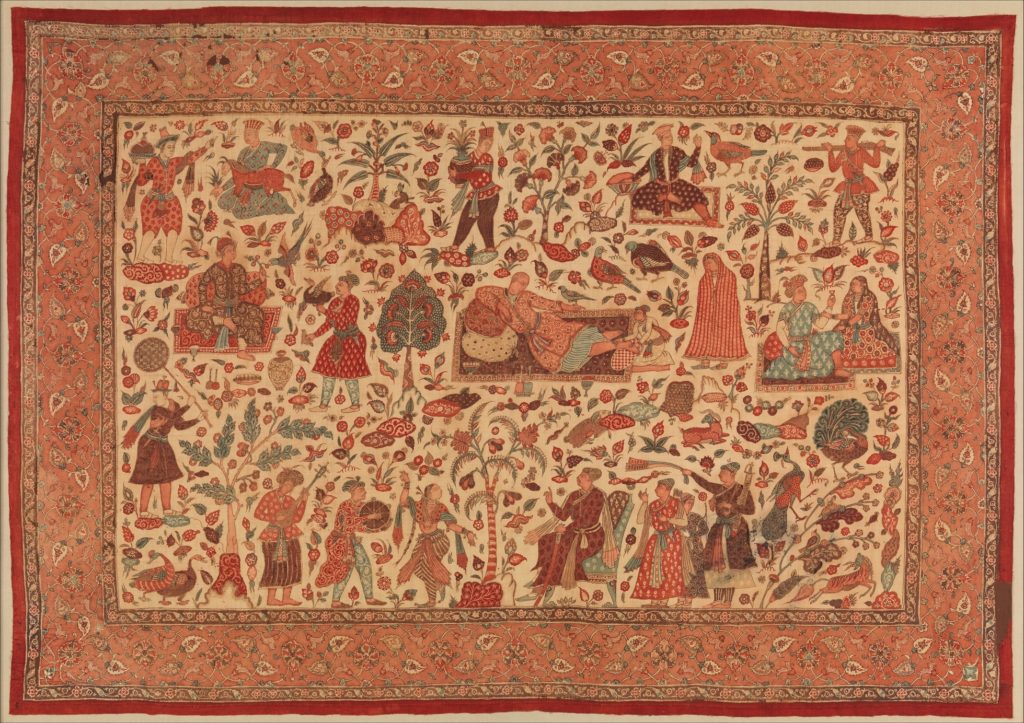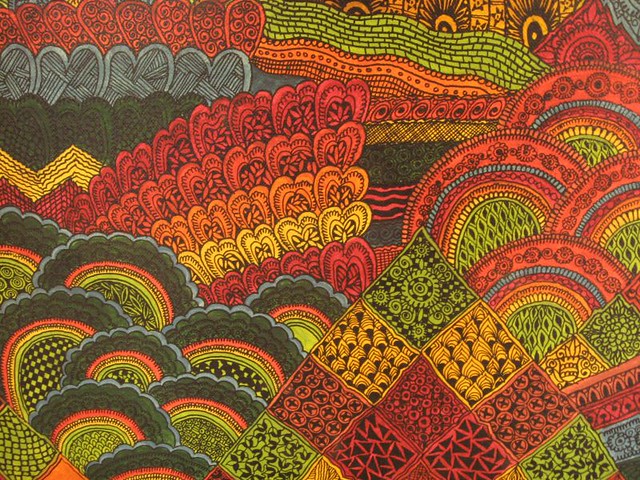Kalamkari paintings are handmade artworks usually made on cotton cloth using bamboo sticks. Usually, plant-based colors are used with a distinct pattern. These paintings were initially used on the walls of temples. Soon they gained popularity with the common people also. Nowadays Kalamkari Paintings are used in their commercial form on Sarees, drapes, and sheets.

Ancient art forms like kalamkari are disappearing into the past, overthrown by the demands of this fast-paced urbanized world. All that remains of the rich cultural heritage of India that the world once envied, are reduced to museums and history books. This treasured art of Kalamkari painting has also been affected due to the loss of patronage.
Making of Kalamkari Painting
The main colors used in Kalamkari are Indigo, red, mustard, green, and brown. Traditionally, these colors are obtained by blending organic ingredients. For example, pomegranate peels are boiled to obtain yellow. Minerals like alum, copper, and iron are also used for preparing the dyes. The color scheme used in Kalamkari is very specific. While women are usually depicted using mustard, Gods are shown blue and demons are colored red or green.
The making of a kalamkari painting involves twenty-three steps of dyeing, bleaching, softening, drying, drawing, and washing. The cloth is washed at least twenty times before it is painted. The process is long and exhausting. Nevertheless, Kalamakri artists are patient with their craft to deliver the best. The minute detailed prints are hand-drawn using sharp and thin bamboo or palm pen sticks.
Evolution of the Kalamkari Art
Kalamkari was used to paint the walls of temples to illustrate mythological scenes. The art form was popularised by the Mughals of Golconda and Coromandel. They gave it the Persian name kalamkari. It translates as ‘kalam’ – pen and ‘kari’ – craft. Meaning the craft done using a pen.

The Hindus artists focused on mythological depictions. While the Mausilipatnam Kalamkar who were dominantly Muslims painted Persian designs.
The Kalamkari painting saw a decline during the British times. It was revived again after independence. In the past few years, Kalamkari emerged as a fashion trend and has become popular.
Kalamkari designs were seen on sarees, blouses, kurtas, bedsheets, and other fabrics. Most women own Kalamkari fabric in some form. Thanks to the fashion industry, this dying art has been reintroduced with the help of digital technology.
From the walls of temples, Kalamkari has moved on to sarees, drapes, and sheets. They are also designed as house decors. Depictions of Buddha and Buddhist art forms are the recent popular patterns.
The designs of the artisans are now printed digitally on the fabric with the original colors of kalamkari. Kalamkari fabrics are now imported worldwide, catering to a large audience.
